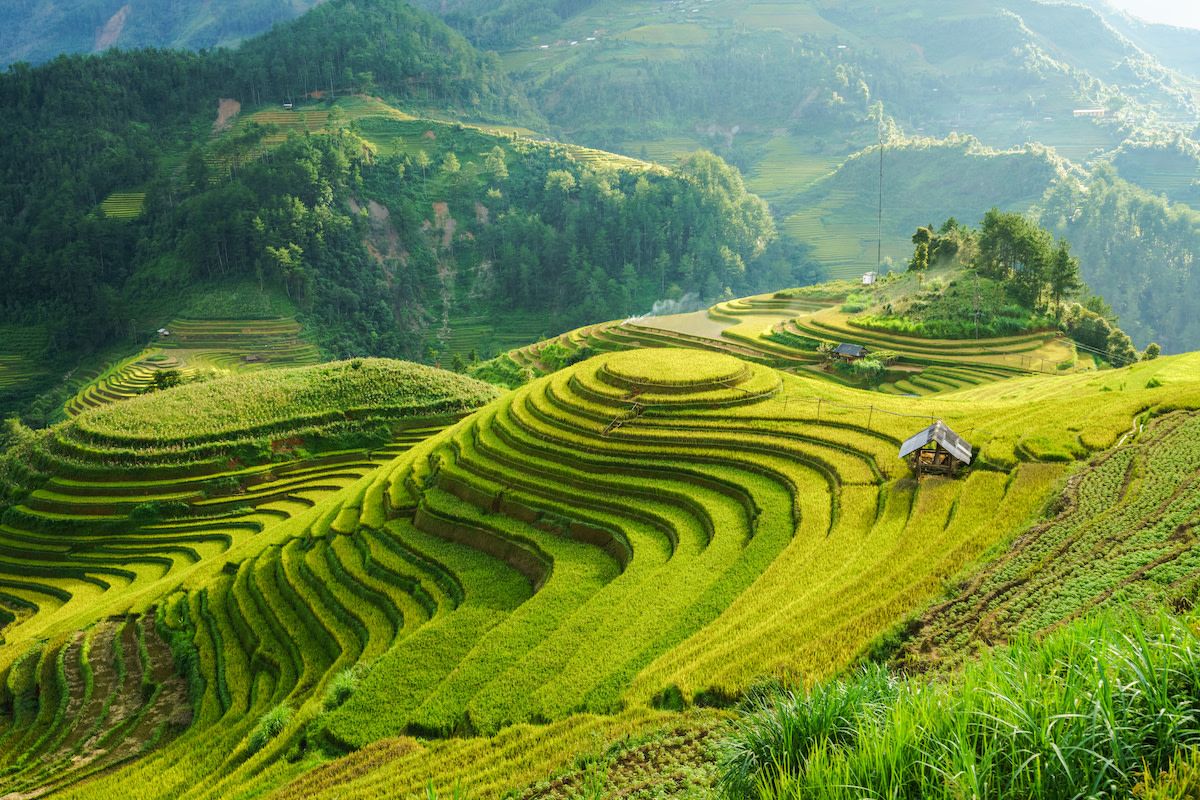
Terracing has been a game-changer in agriculture for centuries, but what exactly makes it so special? Terracing involves creating stepped levels on a hillside, which helps in managing water flow and reducing soil erosion. This ancient technique is not just about farming; it’s a blend of engineering, environmental science, and tradition. Imagine transforming a steep, unusable slope into a series of productive, flat surfaces. Farmers worldwide have used terracing to grow crops in challenging terrains, from the rice paddies of Asia to the vineyards of Europe. Terracing also plays a crucial role in sustainable farming, helping to conserve water and soil. Ready to dig deeper? Here are 28 fascinating facts about terracing that will leave you amazed!
What is Terracing?
Terracing is an ancient agricultural practice that involves creating stepped levels on a hillside. This method helps in managing water runoff and reducing soil erosion. Let's dive into some fascinating facts about terracing.
-
Origins in Ancient Civilizations: Terracing dates back to ancient civilizations like the Incas and the Chinese, who used it to cultivate crops on steep terrains.
-
Inca Mastery: The Incas perfected terracing in the Andes Mountains, creating extensive networks of terraces that are still visible today.
-
Rice Terraces in Asia: Asian countries, especially the Philippines and China, are famous for their stunning rice terraces, which are both functional and beautiful.
-
Soil Conservation: Terracing significantly reduces soil erosion by slowing down water runoff and allowing it to soak into the ground.
-
Water Management: This method helps in efficient water management, ensuring that crops receive adequate water without the risk of flooding.
-
Increased Arable Land: By creating flat surfaces on slopes, terracing increases the amount of usable land for agriculture.
-
Microclimates: Terraces can create microclimates that are beneficial for growing a variety of crops.
-
Labor-Intensive: Building and maintaining terraces is labor-intensive, often requiring a community effort.
-
Sustainable Farming: Terracing is considered a sustainable farming practice as it promotes soil health and water conservation.
-
Biodiversity: Terraced fields can support a diverse range of plant and animal species.
Types of Terracing
Different types of terracing techniques have been developed to suit various landscapes and agricultural needs. Here are some common types:
-
Bench Terraces: These are flat or nearly flat terraces that resemble benches. They are commonly used in hilly regions.
-
Contour Terraces: Built along the natural contour lines of a slope, these terraces help in reducing soil erosion.
-
Riser Terraces: These have a vertical or near-vertical riser, making them look like steps.
-
Stone Terraces: Constructed using stones, these terraces are durable and can last for centuries.
-
Earth Terraces: Made from compacted soil, these are easier to construct but may require more maintenance.
-
Channel Terraces: These include a channel to direct water flow, preventing waterlogging and erosion.
Benefits of Terracing
Terracing offers numerous benefits that make it a valuable agricultural practice. Here are some key advantages:
-
Enhanced Crop Yields: By preventing soil erosion and improving water management, terracing can lead to higher crop yields.
-
Reduced Flood Risk: Terraces help in controlling water flow, reducing the risk of floods in lower areas.
-
Improved Soil Fertility: Terracing helps in retaining soil nutrients, leading to more fertile land.
-
Climate Resilience: Terraced fields are more resilient to climate extremes like heavy rains and droughts.
-
Aesthetic Appeal: Terraced landscapes are often visually stunning, attracting tourists and boosting local economies.
-
Cultural Heritage: Many terraced landscapes are part of cultural heritage, reflecting the ingenuity of ancient civilizations.
Challenges of Terracing
Despite its benefits, terracing also comes with challenges that need to be addressed. Here are some of the common issues:
-
High Initial Cost: The construction of terraces can be expensive, requiring significant investment.
-
Maintenance: Terraces require regular maintenance to prevent collapse and ensure they function effectively.
-
Labor-Intensive: The labor required for building and maintaining terraces can be a limiting factor, especially in regions with labor shortages.
-
Land Tenure Issues: In some areas, land tenure issues can complicate the implementation of terracing projects.
-
Technical Knowledge: Successful terracing requires technical knowledge and skills, which may not be readily available in all regions.
-
Environmental Impact: If not properly managed, terracing can lead to negative environmental impacts, such as habitat disruption and changes in local hydrology.
Terracing: A Timeless Practice
Terracing has stood the test of time for good reason. It’s not just about creating beautiful landscapes; it’s a practical solution for farming on slopes, preventing soil erosion, and managing water efficiently. Farmers worldwide have relied on this method for centuries, adapting it to their unique environments and needs.
From the ancient terraces of Peru to the modern rice paddies of Asia, terracing showcases human ingenuity and adaptability. It’s a testament to how traditional practices can offer sustainable solutions even today. Whether you’re a farmer looking to improve your land or just someone fascinated by agricultural history, terracing offers valuable lessons.
Understanding terracing’s benefits and history can inspire more sustainable farming practices. It’s a reminder that sometimes, the best solutions are the ones that have been around for ages. So next time you see a terraced hillside, remember the rich history and hard work behind it.
Was this page helpful?
Our commitment to delivering trustworthy and engaging content is at the heart of what we do. Each fact on our site is contributed by real users like you, bringing a wealth of diverse insights and information. To ensure the highest standards of accuracy and reliability, our dedicated editors meticulously review each submission. This process guarantees that the facts we share are not only fascinating but also credible. Trust in our commitment to quality and authenticity as you explore and learn with us.
